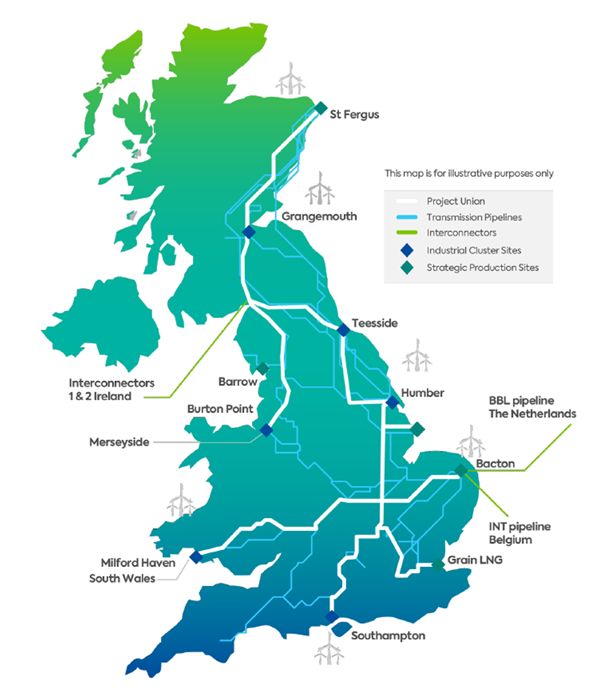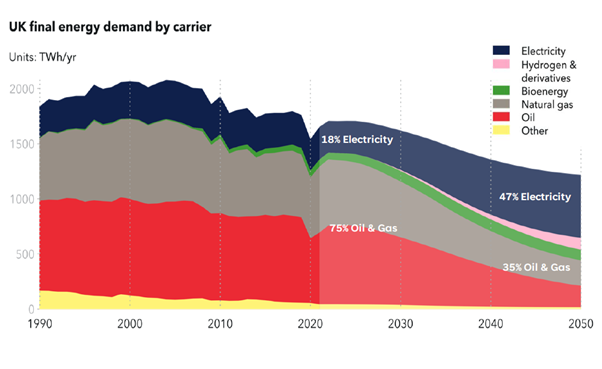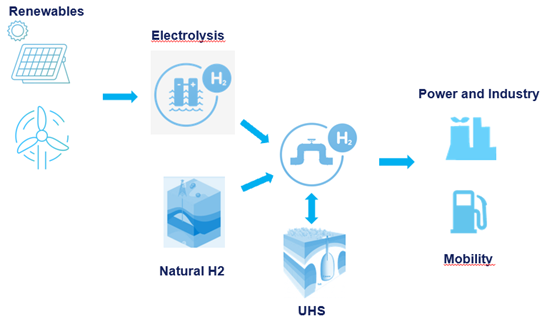Hydrogen
Storengy intends to be at the forefront of the hydrogen revolution.
The world is changing and with the focus on carbon neutral societies, Storengy UK are at the forefront of driving the change to a greener future. Our vision and strategy focus on delivery of Hydrogen storage and infrastructure in Great Britain as a support to the UK’s net zero ambitions.
We strongly believe that low carbon hydrogen will play a key part in global net zero targets, and are prepared to invest in infrastructure to support this ambition.
Why store Low Carbon Hydrogen?
We see several phases to the UK’s energy transition to support its net zero strategy. In the first instance we expect a need for new build salt cavern hydrogen storage sites. These will initially support local industrial hubs in converting from Natural Gas to Hydrogen, helping to capture excess production of hydrogen above demand and supplying additional hydrogen when demand outstrips production. They will also provide support to the network in managing pressures as hydrogen is a less energy dense gas and so more hydrogen needs to be moved for the same quantity of energy to be delivered. This makes it more difficult to manage in pipelines than existing natural gas supplies.
Over time we expect to see transmission projects such as National Grid’s Project Union begin to link these hubs, increasing the amount of available storage to each hub and providing wider opportunities to supply businesses and power stations.

Source: National Gas Transmission: Project Union
The Future of Energy Storage
Under the UK governments plan for decarbonisation of the electricity transmission system by 2035 there will be significant growth in renewable energy supplies such as wind and solar. These sources of power are intermittent (e.g. no power from solar at night). Whilst in the short term (minutes and hours) batteries can store excess power or supply additional peak power, storage of power as electrolysed Hydrogen through a hydrogen network is likely to be more cost effective for longer durations.

Source: DNV UK Energy Transition Outlook 2022
Storing excess renewable electricity this way also has the potential to reduce consumer costs by reducing curtailment payments to renewable sources to turn down when over producing these payments form a part of consumer bills.
Low carbon Hydrogen stored in this way can be used to generate power through power stations or fuel cells when less renewables are available.

Power to gas energy storage is key to decarbonise European energy systems. We firmly believe hydrogen is a promising solution and a project like Centurion will allow us to identify the conditions under which such a project could be developed in the future.
Catherine Gras Chairwoman of Storengy UK Board
We support the UK government’s hydrogen and net-zero strategies and are working with industry groups and the Department for Energy Security and Net Zero to find the right solution to accelerate the creation of Hydrogen storage in the UK.
At our Stublach site we already store around 4,400 GWh of energy in the form of natural gas. This is 1000 times more energy than all the electricity battery capacity in the country. We believe the Stublach facility will be needed for the foreseeable future to support the use on Natural Gas and Biomethane across GB.

